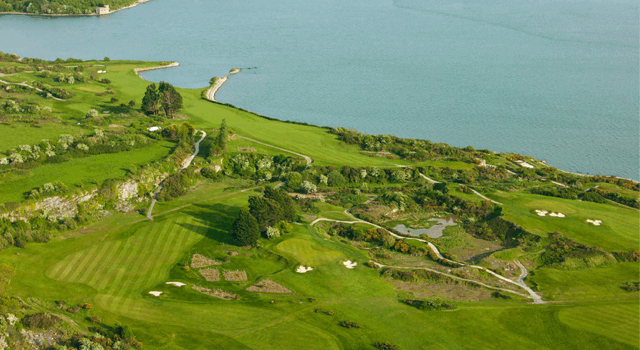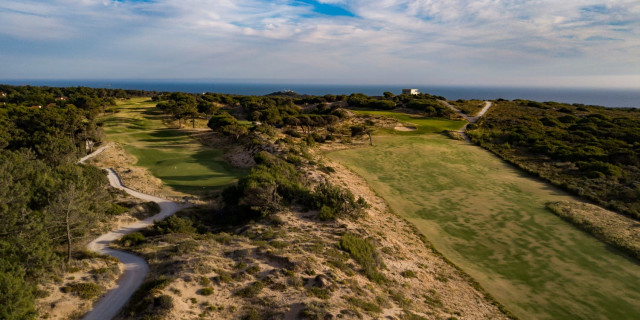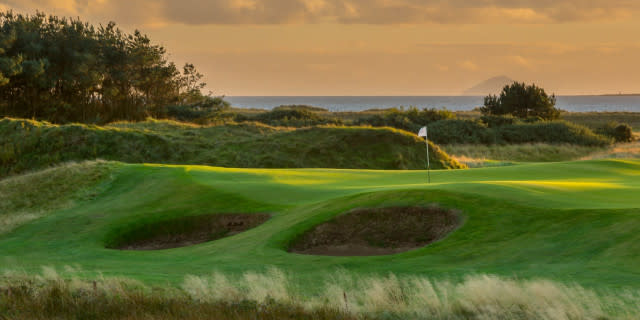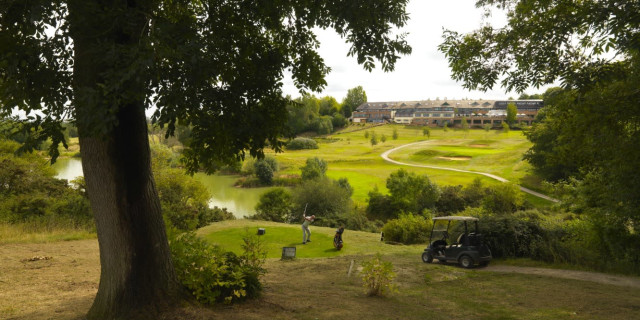Feature Review Cork Golf Club
Cork Golf Club offers a dichotomy: the holes you can see from the clubhouse, and the holes you can’t. They are quite different: those on view are holes as solid as any you’ll see on an old and impressive parkland course; those out of sight take you to an entirely different level of thrills, dipping into a quarry, wrapping around Cork Harbour’s shores and promising sharp chasms and wicked greens. Those clubhouse views lull you into a false sense of security, for this is no ordinary golf course.
Often called ‘Little Island’, Cork Golf Club is one of Ireland’s oldest clubs (1888). It has a rich history with the name of Alister MacKenzie in its veins. In 1924/1925, Cork Golf Club secured the services of MacKenzie to redesign the course. He focused his efforts on making full use of the dramatic terrain, unique to the club. He used the natural humps and hollows to create a course of real character.

Renovations (2010-2013)
The course’s recent renovations focused on returning bunkers to the style favoured by MacKenzie. Trees were also cleared and more gorse introduced to return the course to its original seaside/heathland character. That it has succeeded with such panache is testament to the club’s vision and the work of Martin Hawtree.
Cork has been firmly reinstated into the hearts and minds of Irish and international golfers. The most visible changes are to the bunkers which are deeper, more shapely and more treacherous. They add hugely to the appeal of the course but they’re not there for show. They place an increased premium on both driving and approach shots, making Cork a stiffer challenge than it already was. This is a course for the thinker and the strategist, for a loss of discipline on any hole can see shots evaporate. It is also a course for the opportunist because scoring can be tough.
The Golf Course
That is not to say you won’t love playing here. With its colour and variety, its views and its character, this is an enthralling round of golf. Holes 4 to 10, which take you into and out of the limestone quarry, are an experience you will find difficult to repeat. These are challenging holes but so individual you will want to go straight back to the 4th tee (next to the 11th) and start over.
The greens are magnificent, both in their shapes and their slopes. Greens on 6, 7, 9 and 12 will have you scratching your head, so, if you have the time, practise from different sides of the green and see how you get on.
Cork is a par 72, measuring 6,514 yards from the white tees. There are some deliciously short par fours – the 3rd is 289 yards – but not one is easy and positioning off the tee is crucial. The longest par four is the brutal uphill 4th at 440 yards, which includes a drive over the harbour’s edge, while the 8th whips down into the quarry and then doglegs sharply up to the green.

Beyond the bounds of the quarry holes there are smart doglegs, heaving slopes and trees. And while trees squeeze drives, the most impressive tree of all is well away from where the average golfer will… or should… go. It is a Spanish Chestnut, planted on the left of the 11th fairway, 363 yards from the tee. It was planted in honour of Seve Ballesteros, who hit his drive a staggering distance back in 1983, the day after he won the Irish Open. Not surprisingly, it is some distance from the fairway.
Signature Holes
Par 4 4th
is long, straight and gently uphill. Cork Harbour, which is on show from the 2nd and 3rd holes arrives with some style, slipping in front of the tee and threatening the drive. It is hard not to squeeze your drive for a few extra yards. As with most greens, there are slick fall-offs and tricky putting surfaces. This is where you start to get a feel for the natural shapes of the fairways: bumpy and unpredictable.
Par 5 5th
552 yards, Index 5. Your drive is almost blind, over gorse and an old kiln, so aim at the fairway you can see (left). The hole then swings right and down to the water’s edge where the green sits perched on a narrow strip of land.
Par 3 7th
This 175 yarder sits on the quarry’s edge. From a high tee it looks a straightforward affair, but the slopes around the green are steep and fast. The same is true of the putting surface which calls for the most delicate of touches.
Every part of your game will be sorely tested, but with its rumpled fairways and natural charm Cork is a course you will love.
For more information and Green Fees, visit http://www.corkgolfclub.ie
Image Credit: Jamie Gibson (http://jamiegibson.smugmug.com)
Kevin Markham is an Irish golf writer, blogger and photographer who writes for a number of Irish and UK golf websites & magazines. His book 'Hooked: An Amateur's Guide to the Golf Courses of Ireland' was published in 2011 and reviews all 350 golf courses which he played whilst travelling round Ireland in a campervan - which is told in his new 2014 book 'Driving the Green - An Irish Golfing Adventure'.
Related Content:

















